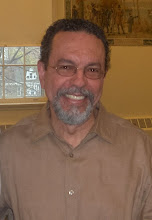Terry Teachout’s recent piece in the Wall Street Journal in which, based on his analysis of a recent survey, he suggested that jazz was pretty much dying, has been described as “overwrought” but his analysis has led some to dub the future of jazz as “cloudy” and “dire.” The follow up by Nate Chinen in the August 19 edition of the New York Times has been described as “reasoned” and “very balanced.” In his blog at www.openskyjazz.com/blog, Willard Jenkins describes a number of grassroots initiatives that, in his view, demonstrate the vitality of jazz across the country. One such program, at the National Jazz Museum in Harlem, holds 150 events a year, for example. Nothing is said, however, about how many people attend these events or about their demographic characteristics. We have to assume that the demographic includes young people, which, according to all assessments, must be a key component of any audience development efforts, if jazz is to survive.
In Albany, my friend Tom Pierce, who is as avid a follower of the jazz scene as anyone can be, told me recently: “Basically, I believe the survey is probably generally correct overall, based on my own observations on who attends Jazz events, and the decreased mass media coverage (or lack thereof) of Jazz, which sadly (but understandably) is financially driven by decreased public interest, especially in the demographic groups they target. I would say (for whatever it's worth) that within music fans there may be some increasing interest in ‘Latin Jazz.’ I really like the way musicians from other countries, like Anat Cohen, Ed Simon, Guillermo Klein, Dafnis Prieto, Francisco Mela, David Sánchez, Miguel Zenón (to cite just a few that I've enjoyed recordings by) find a way to meld the ‘Folk’ music (if you will) of their homelands with Jazz.”
While I would agree with Tom that the audience for Latin jazz is growing, there is still a long road ahead in terms of audience development for Latin jazz. My own experience presenting Latin jazz concerts in the New York State Capital Region tells me that, at this point, the audience for Latin jazz is intensely interested, small, slowly growing, but would rather enjoy the music gratis rather than pay; if they must pay they are not willing to pay much. Unless the performers are very well-known, it is hard to draw big audiences to individual concerts. After each concert the invariable response is “Wow, that was amazing, I had no idea! More people should have been here!” But then it is too late. This is a challenging situation because sources of funding are limited, individual donations are small both in numbers and in the amounts given, and ticket sales cover, at best, one-third of the costs. In fact, even with funding from a combination of grants, donations, sponsorships, and ticket sales, it is difficult to pay the musicians what they really deserve. Overall, presenting Latin jazz is a Penelope or Sisyphean operation (take your mythical reference of choice): at best, I cover my costs; there’s never money left for next year.
When Brian Lynch played the Ahora,Latin/Jazz! Series in 2008, he told the audience: “You are listening to the future of jazz, right here!” I think he was right. The incorporation of Bomba, Plena, Merengue, Cumbia, Samba, etc. to traditional jazz harmonies and structures is not just enjoyable, as Tom Pierce indicates, that really is the future of jazz. So long as the Jerry Gonzalezes, Miguel Zenóns, Papo Vázquezes, Chris Washburnes, Bobby Sanabrias, Willie Martinezes, Chembo Corniels, Brian Lynches, and Dafnis Prietos of the world (and trust me, the list is quite longer) keep keeping on, there will be an audience willing to listen and nurture the genre. This will not happen automatically or without the active efforts of commercial and non-profit presenters, for sure. But the point is that, whatever the effort may be, the death of jazz will remain, as Mark Twain said about reports of his own death, greatly exaggerated.



I have this picture of a Jazz group playing at a bar in Paris,,,the audience wearing those funny flat black hats and smoking cigarets snapping their fingers...OR a bar in New Orleans where a woman with an incredible sensual voice sings about her dreams and her soul...
ReplyDeleteI am one of those people who has attended a Latino Jazz concert and left thinking, "Wow! how come I never came before? and they were not wearing funny hats!" I wonder if other people have that same image about Jazz even today in 2009??...
Venues like Latin Fest are great for sharing this amazing music with people. I mean, how else do we really know about such concerts taking place? other than through Jazz Latino? or perhaps I am just totally out of tune with the music establishment...
I really enjoy jazz as well as latin jazz. I don't think the jazz/latin jazz is dying. It'the type of audience which are the youth. When I was in my teens I started listening to jazz. I got into latin jazz later. I'm from Philadelphia and there's are no stations for latin jazz and as far as jazz goes. Temple University has a station it use to play jazz 24hrs a day. Now you can only hear from 12 midnight to 6am. I pretty sure that latin jazz comes to Philadelphia but, they don't advertised it enough. Temple U. also play latin music on Saturday night from 8pm ~ 12 midnight. But no latin jazz. Maybe there are young people that do listen to jazz/latin jazz But I don't know of any. From what I see they listen to Hip Hop/Rap and that's it. Maybe what we need to do is take the youth and turn them on to some jazz/latin jazz. This way they have other options when it comes to music. Enjoyed your article just wanted to express my comment.
ReplyDeleteThank You,
John Covington
Lets not forget who now owns the Wall Street Journal, Rupert Murdoch. Terry Teachout is a puppet who's strings are controlled by Rupert Murdoch. Terry Teachout is also a contributor to many right wing publications. Case Closed!
ReplyDelete